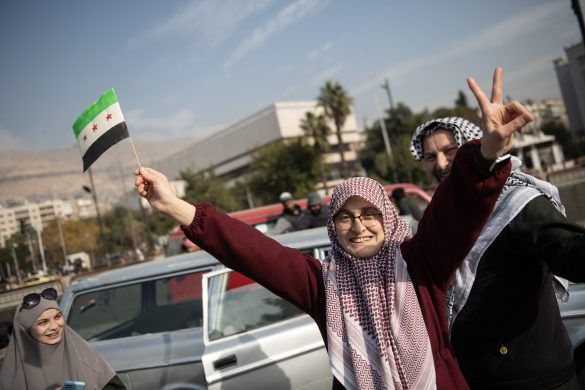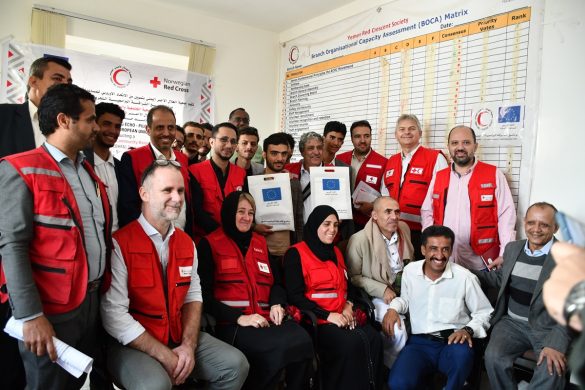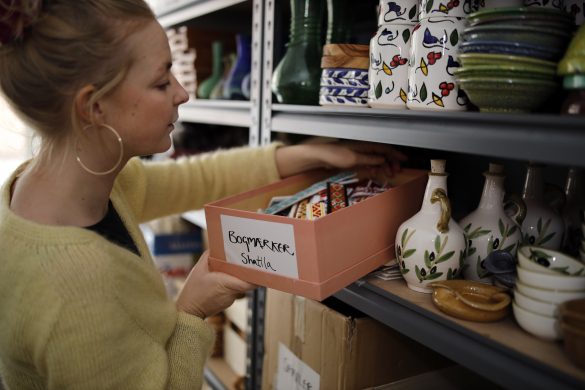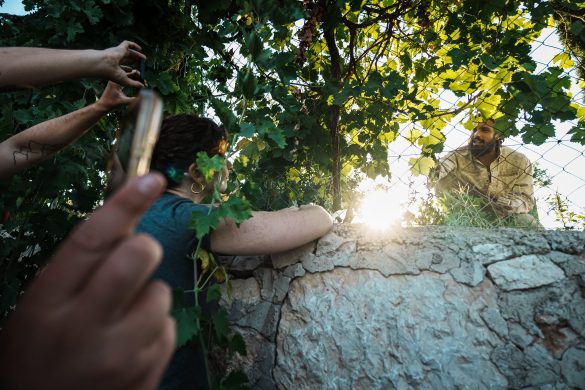Flere steder i Syrien er byer eller bydele belejret af det syriske militær, regeringstro militser eller væbnede oprørsgrupper. Indbyggerne lever under kummerlige forhold og flere steder er folk døde af sult eller af at spise fordærvet mad.
GENEVA 19 February 2014 (OHCHR) – Sieges imposed by Syrian Government forces and pro-Government militias, as well as by armed opposition groups, have resulted in severe hardship, suffering and deaths of civilians, in clear breach of the obligations imposed by international human rights law and international humanitarian law, a UN paper issued Wednesday warns.
An estimated 240,000 people remain trapped in areas under siege in Syria. The paper focuses on several ongoing sieges laid by parties to the conflict in the Governorates of Rural Damascus, Damascus, Homs and Aleppo, which are illustrative of a broader phenomenon.
UN High Commissioner for Human Rights Navi Pillay said the analysis confirmed the devastating impact of the sieges on civilians, including the most vulnerable individuals.
600 dage under belejring
“The situation in Old Homs has been in the spotlight recently, with evacuated families telling of the severe hardship they endured during more than 600 days of life under siege. This paper highlights several other areas in the country in which people have been trapped in similar conditions and are living in utter misery,” the High Commissioner said.
“Starvation as a method of warfare and, by extension, the imposition of sieges that endanger the lives of the civilian population by depriving it of goods essential for survival are prohibited under international humanitarian law,” Pillay warned.
The paper states that “parties to the conflict have prevented the movement of people, goods and supplies through a system of barricades and checkpoints, adding to the hardship of civilians who are facing life-threatening shortages of food, water, electricity, fuel and medical supplies.”
“On occasion, civilians have reportedly been prevented from fleeing through barricades and checkpoints manned by different Government military and security agencies,” it states.
Belejring kombineret med bombardement
In cases of Government-enforced sieges, these have been coupled with shelling and aerial bombardment, which have resulted in significant loss of life and have damaged or destroyed objects indispensable to the survival of the civilian population.
In Rural Damascus, field hospitals, medical points, power generators and water tanks have been damaged or destroyed as a result of Government shelling, the analysis says.
Interviews via Skype with individuals experiencing life in besieged towns paint a grim picture.
“An orthopaedic doctor in Old Homs informed OHCHR that he could not perform simple spinal-cord operations, which in some cases caused paralysis,” the paper states. “Dozens of cases of fracture and limb-related injuries have ended up in amputations or death.”
Spiser hunde og katte
More than 173,000 people are believed to be trapped in Ghouta. In the district of al-Muadhamiya in the Ghouta area of Rural Damascus, several thousand trapped residents are living with hardly any food or other basic necessities, with a number of deaths reported due to inadequate healthcare and nutrition, according to the paper.
Religious clerics have reportedly issued edicts allowing residents to eat cats and dogs in order to survive. The chemical attack on al-Muadhamiya in August last year also left many medical staff incapacitated and unable to treat others.
In Yarmouk, dozens of deaths have been reported due to various factors, including from starvation, the consumption of rotten food, the chronic shortage of medical supplies, and due to the lack of medical expertise to treat sick people and pregnant women trapped in the camp, the paper states.
Belejret af oprørsgrupper
In Nubul and Zahra in northern Aleppo, since July 2012, multiple armed opposition groups have been imposing tight ground sieges, which have prevented food, fuel and medical supplies from entering through checkpoints.
A lack of running water has reportedly forced some residents to dig wells without the necessary sanitary precautions. Vulnerable groups, including the elderly and children, are at particular risk of disease as a result of the deteriorating sanitation conditions. Almost 45,000 people are estimated to be trapped in these villages.
The limited humanitarian aid that has been allowed into certain besieged areas in the last few months remains precarious, subject to parties abiding by ceasefire agreements which are often broken.
”Sikkerhedsrådet svigter syrerne”
“The Security Council is continuing to fail Syrians by not even managing to agree on measures to ensure the provision of basic necessities to people,” Pillay said.
“International human rights law and international humanitarian law require parties to the conflict to ensure rapid, continued and unimpeded passage of humanitarian relief to all civilians in need, and not ad-hoc deliveries and operations,” Pillay stressed, reiterating that impeding humanitarian access to civilians in desperate need may amount to a war crime.
Under international humanitarian law, parties to the conflict must also allow safe passage for persons protected by international humanitarian law out of the besieged area. They must guarantee that the wounded and sick are collected and cared for, and must not destroy objects indispensable to the survival of the civilian population through indiscriminate bombardments and attacks. The paper states that the Government appears to have violated all the above requirements.
Armed opposition groups have also failed to meet their obligations under international humanitarian law by preventing access to food, water and medical supplies by populations they are besieging.
Pillay stressed that the obligation to respect international humanitarian law is not conditional on compliance by other parties to the conflict.
The analysis, which is based on information collected by the UN Human Rights Office between April 2013 and 20 January 2014, is available on: http://www.ohchr.org/Documents/Countries/SY/LivingUnderSiege.pdf.
Comments provided by the Permanent Mission of the Syrian Arab Republic, in a note verbale dated 19 February 2014, are available on: http://www.ohchr.org/Documents/Countries/SY/SyrianCommentsPaperOnSiege.pdf.















